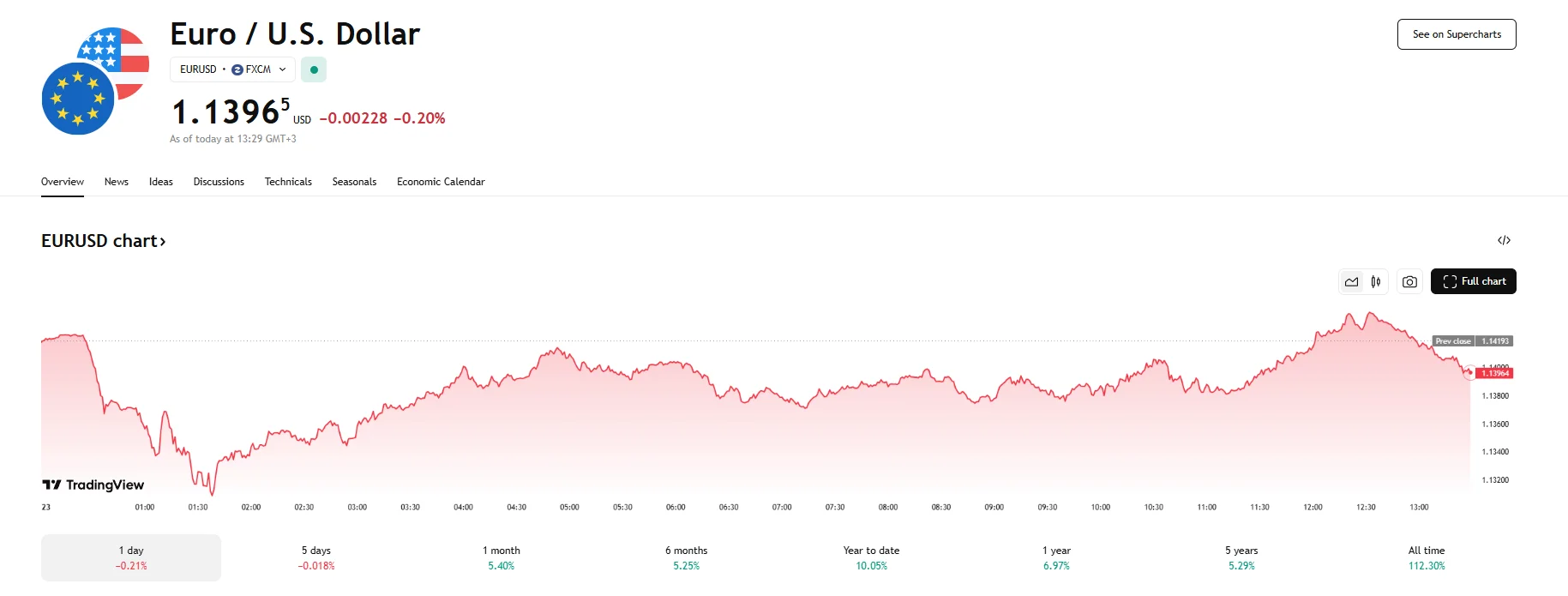EUR/USD Slips Below 1.1400 as Eurozone PMI Hits 50.1 EUR/USD Slips Below 1.1400 as Eurozone PMI Hits 50.1
Key momentsThe EUR/USD pair experienced a decline on Wednesday, dropping to 1.1396.Renewed hopes of a solution to tariff conflicts propelled the US dollar.The Eurozone’s Composite PMI registered at a
Key moments
- The EUR/USD pair experienced a decline on Wednesday, dropping to 1.1396.
- Renewed hopes of a solution to tariff conflicts propelled the US dollar.
- The Eurozone’s Composite PMI registered at a multi-month low of 50.1 in April.
EUR/USD Retreats Amid Weak Eurozone Data
The euro extended its losses against the US dollar on Wednesday, with the EUR/USD pair falling 0.20% to 1.1396. The US Dollar Index (DXY), which measures the currency against six major peers, managed to stay near the 99.00 level after achieving significant gains in the previous session.

The dollar’s resurgence came amid shifting market dynamics, with traders reassessing risk appetite following several statements issued by key US policymakers. Namely, market sentiment toward the dollar improved substantially after President Trump clarified his position on two critical issues affecting currency markets. On Tuesday, the president explicitly stated he had “no intention” of dismissing Federal Reserve Chair Jerome Powell, easing concerns about potential political interference in central bank decisions.
Additionally, Trump signaled the potential for progress when it comes to trade negotiations with China, suggesting that proposed tariffs would be “substantially” lower than 145%. Treasury Secretary Scott Bessent reinforced this message, describing the current tariff standoff as “unsustainable” and indicating tensions could ease.
The euro faced additional pressure following the release of lackluster economic indicators from the Eurozone. April’s preliminary Composite PMI fell to 50.1, barely holding above the contraction threshold and marking a low not seen in months. The services sector, a key driver of European economic activity, slipped to 49.7, its first decline in five months.
While manufacturing activity showed unexpected resilience, with the sector PMI edging up to 48.7, analysts noted that weak demand and cautious business outlooks limited the positive impact. Germany and France, the Eurozone’s two largest economies, both mirrored the regional trend of manufacturing resilience paired with services sector weakness.
Adding to the euro’s woes was the Eurozone’s consumer confidence report, which was released earlier this week. The data revealed a further deterioration in consumer sentiment, with April’s consumer confidence falling to -16.7, a notable decrease of 2.2 points from the previous month. This continued decline in consumer morale painted a concerning picture of weakening domestic demand within the Eurozone, further dampening the outlook for economic growth and adding to the downward pressure on the shared currency.
Disclaimer: The views in this article are from the original Creator and do not represent the views or position of Hawk Insight. The content of the article is for reference, communication and learning only, and does not constitute investment advice. If it involves copyright issues, please contact us for deletion.